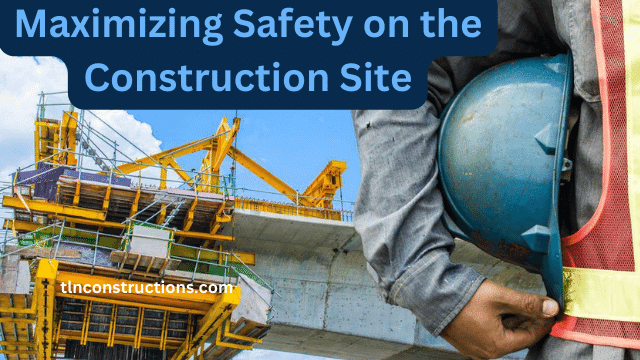Construction sites can be dangerous places, with hazards ranging from falls to heavy machinery accidents. It is crucial to prioritize safety to prevent accidents and injuries. Here are some best practices for maximizing safety on the construction site:
- Use protective gear: Construction workers should always wear appropriate protective gear, including hard hats, safety glasses, gloves, and steel-toed boots. This gear can help prevent injuries from falling objects, flying debris, and other hazards.
- Implement safety procedures: Establishing safety procedures and protocols is crucial to ensuring a safe construction site. This can include daily safety meetings, regular equipment inspections, and enforcing safety rules.
- Train employees: All employees should receive thorough training on safety procedures and how to use equipment properly. It is also important to provide ongoing training to keep employees up-to-date on any new safety procedures.
- Keep the site clean and organized: A clean and organized site can help prevent accidents and injuries. Make sure to clear debris and maintain a tidy workspace.
- Use proper equipment: Using the right equipment for the job is crucial to preventing accidents. This includes using appropriate tools, machinery, and safety equipment.
- Communicate effectively: Communication is essential to maintaining a safe construction site. Make sure all employees know who to contact in case of an emergency and encourage them to report any safety concerns.
- Conduct regular safety inspections: Regular safety inspections can help identify potential hazards and prevent accidents. Make sure to address any issues promptly.
FAQs:
- What are some common hazards on a construction site?
Common hazards on a construction site include falls, electrical hazards, heavy machinery accidents, and falling objects.
- How can I prevent accidents on a construction site?
You can prevent accidents on a construction site by implementing safety procedures, using proper equipment, keeping the site clean and organized, and training employees on safety procedures.
- Why is communication important on a construction site?
Communication is important on a construction site because it helps maintain a safe work environment. Employees need to know who to contact in case of an emergency and be encouraged to report any safety concerns.
Conclusion:
Maximizing safety on a construction site requires a combination of using protective gear, implementing safety procedures, training employees, keeping the site clean and organized, using proper equipment, communicating effectively, and conducting regular safety inspections. By prioritizing safety, construction companies can prevent accidents and injuries and ensure a safe work environment for their employees.
